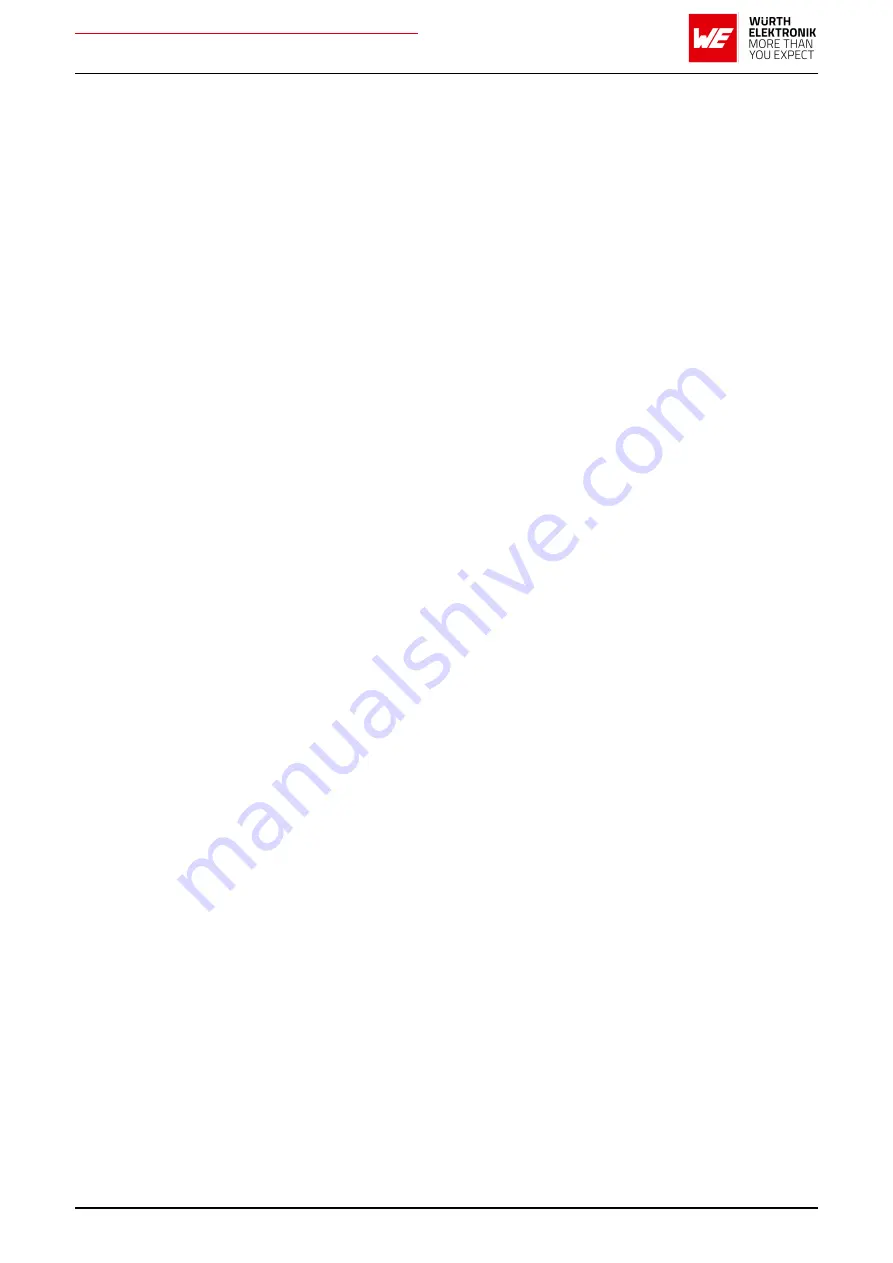
WIRELESS CONNECTIVITY & SENSORS
User manual Thyone-I
19.2.3. Potting and coating
• If the product is potted in the customer application, the potting material might shrink or
expand during and after hardening. Shrinking could lead to an incomplete seal, allowing
contaminants into the component. Expansion could damage components. We recom-
mend a manual inspection after potting to avoid these effects.
• Conformal coating or potting results in loss of warranty.
• The RF shield will not protect the part from low-viscosity coatings and potting. An unde-
fined amount of coating and potting will enter inside the shielding.
• Conformal coating and potting will influence the parts of the radio front end and conse-
quently influence the radio performance.
• Potting will influence the temperature behaviour of the device. This might be critical for
components with high power.
19.2.4. Other notations
• Do not attempt to improve the grounding by forming metal strips directly to the EMI covers
or soldering on ground cables, as it may damage the part and will void the warranty.
• Always solder every pad to the host PCB even if some are unused, to improve the me-
chanical strength of the module.
• The part is sensitive to ultrasonic waves, as such do not use ultrasonic cleaning, welding
or other processing. Any ultrasonic processing will void the warranty.
19.3. ESD handling
This product is highly sensitive to electrostatic discharge (ESD). As such, always use proper
ESD precautions when handling. Make sure to handle the part properly throughout all stages
of production, including on the host PCB where the module is installed. For ESD ratings, refer
to the module series’ maximum ESD section. For more information, refer to the relevant chap-
ter
. Failing to follow the aforementioned recommendations can result in severe damage to
the part.
• the first contact point when handling the PCB is always between the local GND and the
host PCB GND, unless there is a galvanic coupling between the local GND (for example
work table) and the host PCB GND.
• Before assembling an antenna patch, connect the grounds.
• While handling the RF pin, avoid contact with any charged capacitors and be careful
when contacting any materials that can develop charges (for example coaxial cable with
around 50-80 pF/m, patch antenna with around 10 pF, soldering iron etc.)
• Do not touch any exposed area of the antenna to avoid electrostatic discharge. Do not
let the antenna area be touched in a non ESD-safe manner.
• When soldering, use an ESD-safe soldering iron.
Order code 2611011021000
160
Version 2.3 , July 2022
















































